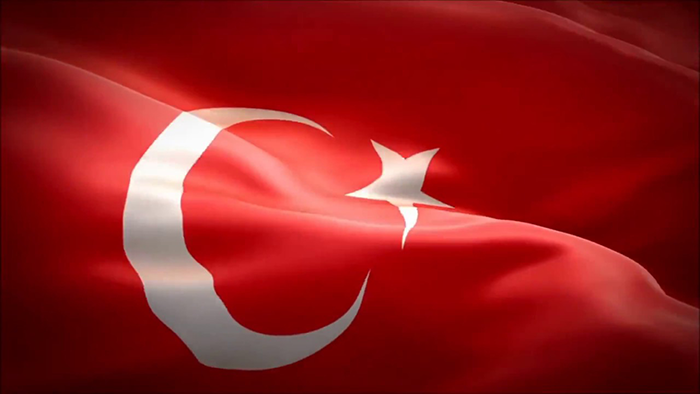Analyses / Observatory of Turkey and its Geopolitical Environment
5 February 2025
Turkey: the “Steel Dome” project

“Iron Dome” is the name given to the lower-tier foundation of the IMDO air defense system, which was gradually deployed by the State of Israel following the Gulf War in 1991.

The Israeli low-layer foundation has been operational since 2011. It has been tested almost daily since the Hamas attacks on October 7, 2023, particularly to intercept and destroy short-range rockets like Katyushas, or longer-range 122 mm rockets fired by Hezbollah.
The Israeli “Iron Dome” is, therefore, strictly speaking, only the first level of protection from the ground. The Turkish project “Steel Dome” (Çelik Kubbe), on the other hand, aims to integrate, both at sea and on land, multi-layer air defense systems, sensors, and other weapon systems into a network. According to Turkish authorities, it is a true “system of systems” that will allow for the real-time development and dissemination of a common air situation (Recognized Air Picture, RAP) refined by artificial intelligence input.
The “Steel Dome” will have to consider existing air defense systems, notably in Ankara and along the Bosphorus and Dardanelles straits, and address new needs like the protection of the Akkuyu nuclear power plant.
The decision to launch the “Steel Dome” project was made on August 6, 2024, by the Executive Committee of the Defense Industry (SSİK). Following political statements clarified that the project would be carried out in a “local and national” manner, which implies the design and manufacture of materials entirely within Turkey by Turkish companies. Key players selected for the project, ASELSAN, ROKETSAN, TÜBİTAK SAGE, and MKE, rely on local subcontractors but will call upon foreign suppliers when necessary, keeping their involvement as low-profile as possible to highlight the Turkish identity of the materials.
Turkish-origin air defense systems needed for the “Steel Dome” project are already in service or under development.
Regarding weapons:
- Short-range, low-altitude systems (firing range < 5 km): Cannons: KORKUT (35 mm) and its naval version GÖKDENİZ (same caliber) already in service. They are complemented by older foreign systems in service or in reserve: BOFORS L-60/70/70T/M1A1 (40 mm), OERLIKON GAI-D01 (2 X 20 mm), OERLIKON GDF-001/003 (2 X 35 mm), M42A1 DUSTER (40 mm), M55 (12.7 mm), and RHEINMETALL MK-20 RH-202 (2 X 20 mm). Under development: C-RAM (Counter Rocket, Artillery, and Mortar) version of KORKUT, BURÇ (30 mm), GÜRZ (35 mm), and GÖKER (35 mm);
- Missiles: HİSAR-A+ in autonomous or towed version, HİSAR ManPADS and its SUNGUR version integrated on the BMC VURAN 4X4 vehicle. These are already in service. Foreign systems of the same category operational in the Turkish Armed Forces include STINGER ManPADS, STINGER ATILGAN (mounted on M113), STINGER ZIPKIN (mounted on Land Rover Defender 130), RAPIER MK.2B, and FIM-43 REDEYE. Under development for the Navy: GÖKSUR and LEVENT;
- Medium-altitude, medium-range systems (firing range < 20 km): HİSAR-O+ missile, which has a naval version (HİSAR-OD). These are already in service. In the same category, the MIM-23 HAWK / HAWK XXI transferred to Turkey under the US Southern Region Aid (SRA) are still operational. Under development: GÖKDEMİR. The short-range air-to-air missile GÖKDOĞAN (IIR seeker) and the medium-range air-to-air missile BOZDOĞAN (RF seeker, similar to the Israeli TAMIR missile) could be adapted to the HİSAR-A and HİSAR-O systems;
- High-altitude, long-range systems (firing range > 20 km): HİSAR-U/SİPER Ürün[2]-1, 2, and 3, with the first (1) already delivered to the forces, and the subsequent versions (2 and 3) still under development. As the use of S-400s purchased from Russia raises concerns about potential fratricidal fire, Turkey still relies on its MIM-14 NIKE HERCULES, or on NATO assets put in place under NATO Support to Turkey (NS2T).
This list should also include the HİSAR-G/G+, which would be a HİSAR system utilizing air-to-air GÖKTUĞ munitions.
Regarding radars:
- The ERALP long-range surveillance radar and the MAR (Mobil Arama Radarı, mobile search radar, mounted on vehicles) are in service;
- The KALKAN acquisition radar is in service;
- The AKR fire control radar, on land or on ships (version D), is in service.
The Turkish defense industry is also developing most of the components necessary for the “Steel Dome”: the satellite positioning system (GNSS) KAŞİF, the KKS antenna (GPS), and the ATLAS inertial measurement unit. Additionally, on December 5, 2024, the Turkish Armed Forces’ cloud computing system project (TSK Bulut Bilişim Sistemi Projesi) was launched, which will provide an essential infrastructure for the “Steel Dome.”
The general manager of ROKETSAN stated that the “Steel Dome” will protect “the entirety of Turkey against future air threats.” However, since this statement does not provide details on the permanence of the deployment, it raises several questions.
Firstly, Israel, which is smaller than Turkey in size, would have at least 10 Iron Domes for low-level protection. While a higher number is sometimes suggested, it must be acknowledged that they do not cover areas that are uninhabited. France, itself, could not cover its entire territory with a fully airtight system. It deploys, in cases of high air threats, such as during large events, special security arrangements (DPSA) aimed at temporarily tightening the air defense net around the sensitive zone. Other countries have shelters to protect populations in case of air attacks. Therefore, a permanent, fully airtight protection of Turkish territory would require an operational commitment that the armed forces could hardly sustain, or would require painful capability breaks.
Secondly, the Israeli “Iron Dome” is not infallible. For example, it did not prevent Hezbollah from attacking a military base in Binyamina, northern Israel, which cost the lives of four people and left several dozen wounded on October 13, 2024. Hence, the laser project “Iron Beam” is intended to intercept and destroy drones and Qassam rockets used by Hamas more effectively. Aware of this need, Turkey has launched similar laser programs ALKA and GÖKBERK to complement its “Steel Dome” project.
Cost will be a major variable. Figures suggest that a shot from the Israeli “Iron Dome” costs over $10,000, and a TAMIR missile costs around $50,000, making it necessary for Turkey to later export its “Steel Dome” to allied and friendly countries, as announced by the general manager of ASELSAN.
Lastly, the Israeli air defense system operates with the support of the United States. While Turkey is very determined to achieve independence from external sources, it does not have an unlimited budget and has not yet reached full technological maturity to develop high-performing technologies capable of neutralizing targets flying at very high speeds (up to 8 km/s). It will be up to SSİK, when the time comes, to decide on research priorities and weapon programs and make the necessary trade-offs.
[1] Or ‘layered’: which take into account the different distances and altitudes of threats.
[2] Ürun means ‘product’. Announced ranges: 100 km for Ürun-1 and 150 km for Ürün-2.
[3] It is vital that the S-400 does not identify a Turkish or allied aircraft as an enemy using its A2/AD (Anti-Access/Area-Denial) capabilities, which is why it is necessary to reprogram the IFF (Identification, Friend or Foe) at the origin of the system according to the Turkish perception of the threat with the National Threat Data Bank and using national and NATO algorithms.
[4] « İkinci, Çelik Kubbe’nin, Türkiye’nin tamamını havadan gelecek saldırılara karşı koruyacak sistem olduğunu ifade ederek … » et « “Çelik Kubbe, Türkiye’nin tamamını havadan gelecek saldırılara karşı koruyacak hava savunma sistemini ifade ediyor… »
[5] « ASELSAN Genel Müdürü Ahmet Akyol, ROKETSAN ve TÜBİTAK SAGE iş birliğinde üretilen yerli hava savunma sistemi Çelik Kubbe’yi Türkiye’den sonra dost ve müttefik ülkelerde de hayata geçirmek istediklerini söyledi »

